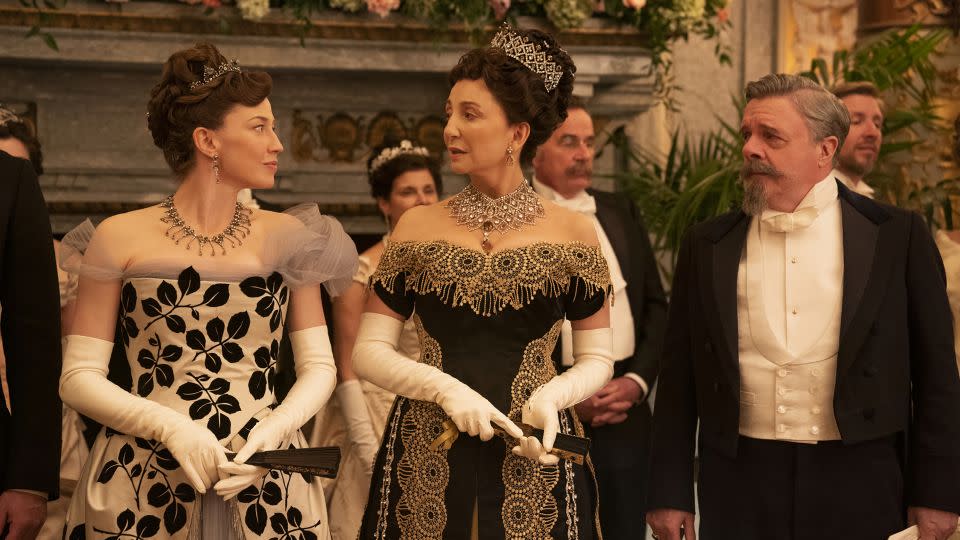‘The Gilded Age’ builds its soapy second season around a fight at the opera

“The Gilded Age” returns for a second (and possibly final) season that feels even more conspicuously like “Downton Abbey Lite.” That’s not necessarily a bad thing, as the show remains highly watchable as a finely tailored, lushly decorated soap, with the added benefit of incorporating 19th-century history, like early struggles of the labor movement (timely, given Hollywood’s recent woes) and the opening of the Brooklyn Bridge.
As in Season 1, there’s a lot going on both upstairs and downstairs around 61st street in 1880s Manhattan, some of it a little clunkier and more hurried during this eight-episode flight.
The central conflict boils down to the continuing clash of titans between the new-money Russells and the family’s imperious matriarch Bertha (Carrie Coon, again spectacular), and old-money society heavyweight Mrs. Astor (Donna Murphy), whose battle plays out through dueling opera houses. It all forces the town’s well-heeled citizens to uncomfortably choose sides – with apologies to the Marx brothers, a fight at the opera, if you will.
Elsewhere, Bertha’s husband George (Morgan Spector) faces the early pressures of an organized labor movement, and the impulse of the old robber barons, of which he’s one, to crush workers in the face of demands for enhanced safety protocols and shorter workdays. It’s hard to overlook that storyline playing out during a strike that has hobbled Hollywood, even if modern tactics are less bare-knuckled and overtly brutal.
As with “Downton,” too, the class struggle generally takes a back seat to more romantic concerns, including a potential love interest for Marian (Louisa Jacobson); Peggy (Denée Benton) facing her own personal and professional complications, after the terrible revelation about her father’s betrayal at the end of the first season; closeted Oscar (Blake Ritson) still seeking a wealthy wife who won’t ask too many questions; and the Russell children’s quests to pair up, with Larry (Harry Richardson) taking an architectural job working for an attractive widow (Laura Benanti, one of several welcome new additions to the cast).
Series creator Julian Fellowes again treats the show as a virtual companion to “Downton Abbey,” weaving in real-life events, such as the Bridge, and historical figures like Oscar Wilde and Booker T. Washington, albeit in fleeting appearances.
Of course, Marian’s situation plays out under the watchful eye of her aunt Agnes (Christine Baranski), whose acerbic wit and exasperation over shifting societal norms and “the new people” makes her the closest thing to “Downton’s” Dowager Countess that TV currently has to offer, which is practically worth the price of admission by itself.
Fellowes (who as usual writes or shares credit on every episode) juggles too many balls to tie them up neatly, but there’s enough closure that it might suffice should “The Gilded Age’s” opera season turn out to be its coda. Despite its various charms and splendid cast, it’s fair to say the series didn’t generate the commercial, awards or critical adulation HBO normally seeks, factors that might prevent another encore.
Given the frothy, at worst PG-rated shenanigans that preoccupy these upper-crust New Yorkers and their servants, the series also still feels like something of an outlier for HBO, but an enjoyable one. If that’s not enough to elicit thunderous applause, in keeping with the spirit of the season, it’s certainly worthy of an opera clap.
“The Gilded Age” begins its second season October 29 at 9 p.m. ET on HBO, which, like CNN, is a unit of Warner Bros. Discovery.
For more CNN news and newsletters create an account at CNN.com

